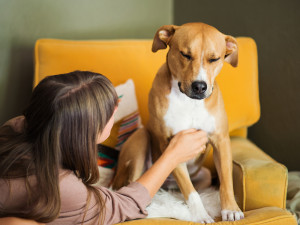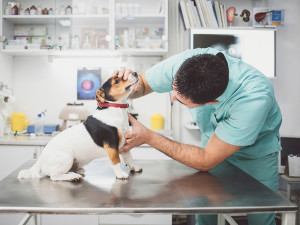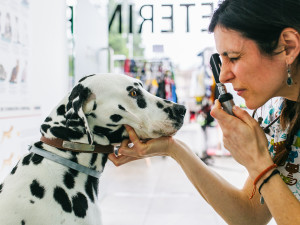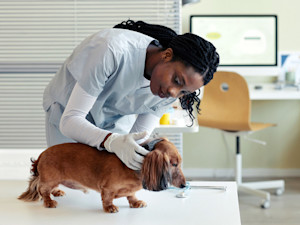Lipomas in Dogs: Causes, Symptoms and Treatment of Fatty Tumours
Veterinarian Dr Nancy Kay on why these fatty tumours aren’t always cause for concern
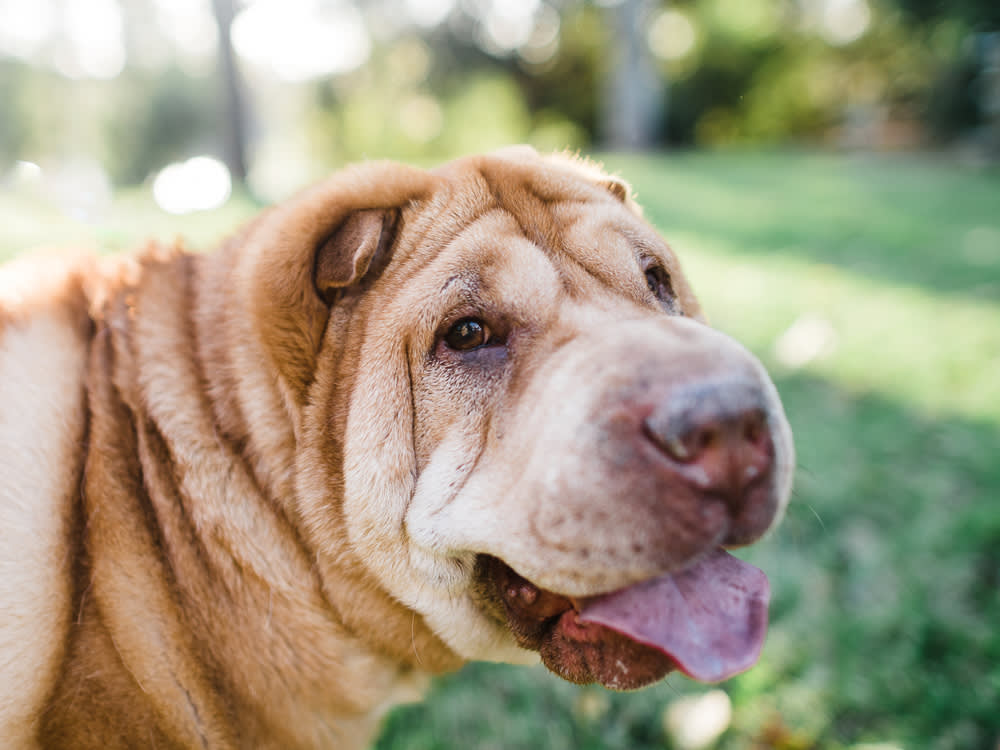
Share Article
In this article:
What are lipomas? opens in a new tab Symptoms of lipomas in dogsopens in a new tab What causes lipomas?opens in a new tab How are lipomas diagnosed?opens in a new tab How are lipomas treated?opens in a new tab When to seek veterinary careopens in a new tab Can lipomas be prevented?opens in a new tab
A lipoma is a benign tumour made up of fat cells that is common in middle-aged or older dogs. It is typically soft and movable, and should not cause pain or discomfort. But if it is large or located in an area where it interferes with movement, it may need to be removed surgically.
Of all the benign growths your pup might develop as they age, lipomas (aka fatty tumours) are one of the most common. Older dogs often have at least one or two cutaneous (within the skin) or subcutaneous (just beneath the skin surface) lumps and bumps.

Get (totally free) deals for food, treats, accessories, tech and way more pet parenting must-haves.
opens in a new tabThey’re common by-products of the ageing process. The good news is, most of these tumours are benign (not cancerous) and totally harmless. However, there are a small number of malignant (cancerous) masses – which is why it’s important to have your veterinarian inspect any new lumps and bumps your dog develops.
Lipomas in dogs often give pet parents severe anxiety when there are multiple or very large masses present. So it’s a good idea to get to know what your dog’s healthy, normal body looks like by performing regular at-home physical examsopens in a new tab. Generally, the smaller a cancerous growth is at the time of treatment, the better the outcome.
What are lipomas?
Lipomas are very common fat-based masses, or tumours, seen on middle-aged and senior dogsopens in a new tab, and they’re generally benign. These soft, slightly moveable masses arise from fat (or lipid) cells and are typically found in the subcutaneous tissue of axillary regions.
Pet parents often find these lumps in areas like the armpits and alongside the dog’s chest and abdomen – though occasionally lipomas develop within the chest or abdominal cavity.
Dogs rarely develop only one lipoma. They tend to grow in multiples, sometimes more than you can count. While lipomas usually grow slowly, each one is different and some progress much more quickly.
Simple lipomas are soft, well-encapsulated and slow-growing. Infiltrative lipomas are more aggressive and will often encroach on nearby tissues, including muscle, bone and nerves. These tend to grow faster than simple lipomas. Though rare, lipomas can be malignant. Malignant lipomas are called liposarcomas. Liposarcomas are not typically mistaken for simple or infiltrative lipomas because they differ in texture.
How common are lipomas in dogs?
Lipomas are very common in older dogs. One UK-based studyopens in a new tab found that almost two percent of the dogs in the study were diagnosed with a lipoma. The study included over 380,000 dogs and found that dogs were more likely to develop a lipoma as they got older.
How do lipomas affect dogs?
A lipoma is typically considered to be a cosmetic issue that does not cause a dog any discomfort. Because these fatty tumours continue to grow, they can reach a size that affects movement or comfort. Large lipomas or lipomas on limbs are more likely to accidentally get scratched, risking bleeding and infection. Because these fatty tumours continue to grow, they can reach a size that affects movement or is likely to accidentally get scratched, risking bleeding and infection.
What are the symptoms of lipomas in dogs?
Symptoms of lipoma in dogs tend to be straightforwards. The most obvious sign that a dog has a lipoma is actually feeling a soft lump under a dog’s skin. Simple lipomas are soft, rounded and moveable. They do not cause dogs any pain or discomfort. They can occur anywhere on the body, but tend to grow on the trunk or limbs. Typical lipomas will grow slowly over time. If a lipoma grows large enough, it can affect how a dog walks or lies down.
Lipomas that grow within the chest or abdomen can cause a variety of symptoms depending on their size and location. Abdominal lipomas can put pressure on the intestinal tract, causing obstruction, while thoracic lipomas can put pressure on the lungs or airway, causing coughing or difficulty breathing.
What causes lipomas in dogs?
No one knows what causes lipomas because risk factors include a complicated mix of environment, genetics, diet and care. There’s no simple solution for preventing lipomas in dogs, but there are a few things to consider when assessing your dog’s risk factors.
Age has a big impact
Your dog’s chance of getting lipomas increases as they age. Compared with dogs between three and six years old, senior dogs aged nine and older are 17 times more likelyopens in a new tab to develop a lipoma.
Weight plays a role
Studies show that overweight dogs are more predisposed to developing fatty tumours. Keeping your pup at a healthy body weightopens in a new tab isn’t a cure-all, but it’s a good thing to strive for.
Breed matters
Any dog can develop a lipoma, but some breeds have a higher predisposition to lipomas, including Dobermann Pinschers, Weimaraners, Labrador Retrievers, Springer Spaniels, Beagles, German Pointers and Miniature Schnauzers. Overall, pure-bred dogs are more likely to develop lipomas than mixed breeds.
How are lipomas diagnosed in dogs?
When a veterinarian finds a small, squishy lump on an older dog, they can often say with a fair amount of confidence that it’s ‘probably a lipoma’, but this isn’t an official diagnosis.
When your vet suspects a dog lipoma, diagnosis is made by collecting cells from the lump via fine-needle aspirate and inspecting those cells beneath a microscope (cytology). When examined under a microscope, lipomas – tumours made of fat – will have fat cells. Makes sense, right?
Because infiltrative lipomas (ones that invade adjacent tissues) are similar to simple lipomas on physical and cytological examinations, imaging may be recommended to determine how deep a lipoma goes and if any other tissues are involved. This can be done with imaging like a CT scan. Biopsy (collecting a small tissue sample for testing) can be performed if there is concern for malignancy and to differentiate from other tumours like mast cell tumours.
What is the treatment for lipoma in dogs?
Treatment is not generally required for the vast majority of dog lipoma cases – that’s because of their benign, slow-growing nature. Lipomas don’t go away on their own, but the only issue most create is purely cosmetic – and trust us, your dog couldn’t care less.
But, in some circumstances, it may be beneficial to remove the lipoma. While surgical lipoma removal is relatively common, it is still a surgical procedure with risks such as anaesthesia-related complications and post-op infections.
Veterinary removal costs
If your veterinarian recommends that the lipoma be removed, or you elect to do so for cosmetic purposes, expect to pay between £460 and £660opens in a new tab per removal of each fatty tumour mass. For difficult-to-reach lumps, pet parents should be prepared for the lipoma removal cost to rise upwards of £970 each if a specialist is required.
When to seek veterinary care
Given that pups often have multiple lipomas, removal costs can add up quickly. So, how do you know if the cost of surgical removal is worth it? There are a few exceptions to the general recommendation to let sleeping lipomas lie. A fatty tumour may require removal and definitely deserves more veterinary attention in the following situations.
1. The location of a lipoma interferes with mobility
If a lipoma is steadily growing in an area where it could ultimately cause problems with a dog’s mobility, you might choose to remove it before it gets too large. The armpit is the classic spot where this happens. That being said, even in one of these critical areas you’ll likely only need to have the lipoma surgically removed if it’s growing large.
2. The tumour grows suddenly and/or changes in appearance
Notice either and you should have a vet check out your dog right away to recommend the best course of action.
3. The lipoma is actually an infiltrative liposarcoma
Every once in a great while, a fatty tumour turns out to be an infiltrative liposarcoma rather than a lipoma. These are the malignant black sheep of the fatty tumour family. Your vet will be suspicious of an infiltrative liposarcoma if the fine needle aspirate cytology reveals fat cells yet the tumour feels fixed to underlying tissues (lipomas are normally freely moveable). Liposarcomas should be aggressively surgically removed and sometimes treated with radiation therapy.
4. The lipoma expands to truly mammoth proportions
If you’ve ever looked at a dog and thought, ‘Wow, there’s a dog attached to that tumour!’ chances are you were looking at a lipoma. Such massive growths have the potential to cause the dog discomfort. They can also outgrow their blood supply, resulting in possible infection and drainage from the tumour. The key is to surgically remove the tumour before it becomes too big and far more difficult to remove.
Can lipomas in dogs be prevented?
While lipomas can’t be prevented, they should be monitored. Be sure to note any unusual lumps or changes in existing lipomas and keep up with your dog’s annual vet visits so they can assist with diagnosis and mitigate any concerns. Your veterinarian may want to measure and map your dog’s lipomas, making it easier to determine if new lumps are developing or if the old ones are changing.
While there are no specific preventative measures for lipomas in dogs, pet parents can try to minimise the risk of lipoma formation by keeping your pup at a healthy body weight. This means feeding an appropriate diet and making sure your dog gets plenty of exercise.
Frequently asked questions
Can a lipoma burst or become infected?
Lipomas typically do not burst or become infected, but if a lipoma’s blood supply becomes compromised for any reason, the lipoma can become necrotic (suffer from tissue death) and infected.
How can I identify a lipoma on my dog?
Finding a soft lump under an older dog’s skin can give a dog parent or their veterinarian a strong suspicion for a lipoma. The only way to definitively diagnose a lipoma is through sampling, like a fine needle aspirate.
Can a lipoma be cancerous?
Most dog lipomas are benign and well encapsulated, but infiltrative lipomas can invade nearby tissues. Though rare, some dogs may develop a malignant lipoma, called a liposarcoma.
Are there natural treatments that slow lipoma growth?
There is no reliable dog lipoma natural treatment, but dog parents can reduce the risk of lipomas by using diet and exercise to ensure their dog maintains an appropriate body weight.
References:

Nancy Kay, DVM
Nancy Kay, DVM is a board-certified specialist in the American College of Veterinary Internal Medicine. She was a recipient of AAHA’s Animal Welfare and Humane Ethics Award and is the author of Speaking for Spot.
Related articles
![woman with red hair holds senior Pomeranian dog]() opens in a new tab
opens in a new tabSenior Dog Care
Is your dog getting older? As dogs age, it’s important to recognise both physical and mental changes they may be experiencing and learn how to cater to those needs
![A pet parent checks their dog's stomach.]() opens in a new tab
opens in a new tabDIY Physical Exam – How to Examine Your Dog’s Stomach and Skeleton
Veterinarian Dr Shea Cox on how to properly examine your dog’s stomach and musculoskeletal system
![A vet examining the neck of a small dog on the examination table]() opens in a new tab
opens in a new tabLymphoma Cancer in Dogs: What You Need to Know
Find out what causes lymphoma in dogs and how you can help your pup
![Young female veterinarian in her consulting room performing a medical examination on a dog for diabetes]() opens in a new tab
opens in a new tabDiabetes in Dogs: Symptoms, Treatment and Prevention
Learn which breeds are at risk, the symptoms to look out for and what treatment options are available.
![Man with glasses on the phone with dog on his lap]() opens in a new tab
opens in a new tabWhat to Do When Your Dog Eats Something Toxic
So Fido has been in your chocolate stash... here’s what to do
![]() opens in a new tab
opens in a new tabWhat to Do If Your Dog Has a Slipped Disc
A veterinary neurologist explains all




